Titebond wood glue: types and nuances of application
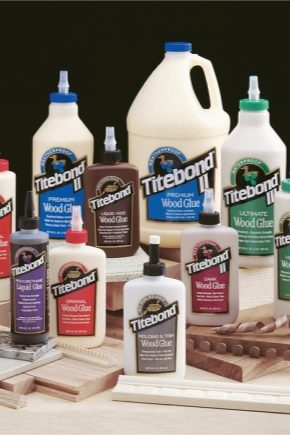
The well-known Titebond wood glue has earned a reputation as one of the highest quality materials used for gluing wood. The use of innovative technologies in the development of a unique composition made it possible to create a sticky substance with which it is possible to perform various types of work.
Types
There are about 25 types of Titebond glue that are successfully used for industrial purposes. The most common universal moisture resistant formulations, consisting of one component. They are used for gluing wood.
Distinguish:
- II Premium. The composition is distinguished by moisture resistance, elasticity, and immunity to solvents.
- Original Wood Glue. The composition has high hardness, non-plastic.
- Titebond adhesive 3. It contains no chemical solvents.
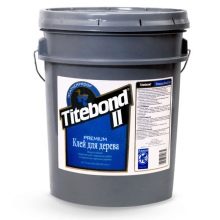
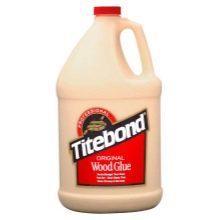
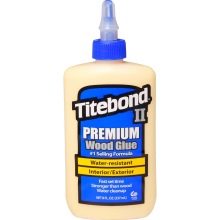
Depending on the purpose and conditions of use, one or another composition is selected.
Peculiarities
Titebond adhesive is intended for professional use. However, if the instructions are followed, it can be used in everyday life.
Depending on the type of substance, the composition of the components is also different. Among the main components are aliphatic resin, synthetic rubber, polymers, polyurethane, protein, water. Standard packaging contains 473 ml of substance.
When working with glue, it is important to observe the temperature regime, humidity parameters, which are indicated on the manufacturer's packaging.
It should be noted that when the sticky emulsion hardens, it forms a beige film. The glue can be easily removed from the treated surface until it dries. After that, you will have to use the means at hand.
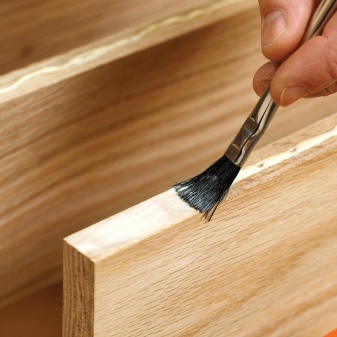
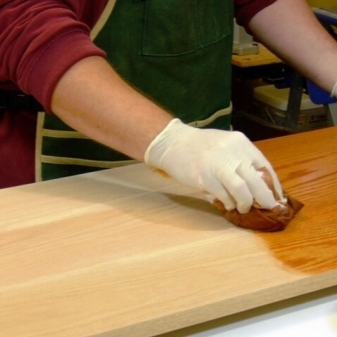
Characteristic
Depending on the type of composition, Titebond adhesive (to a greater or lesser extent) has the following characteristics:
- possesses water resistance;
- provides high bond strength;
- has resistance to high temperatures (up to 50 degrees above zero);
- does not collapse under the influence of chemicals;
- does not perceive acoustic vibrations;
- does not contain abrasive components, and, therefore, does not spoil tools;
- the substance contains toxic components;
- does not collapse when frozen;
- flammable at a temperature of 100 degrees.
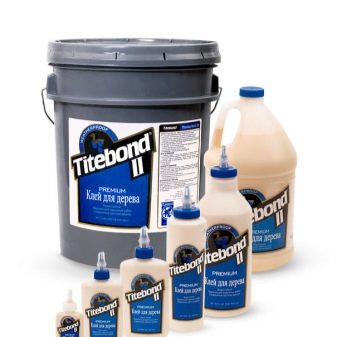
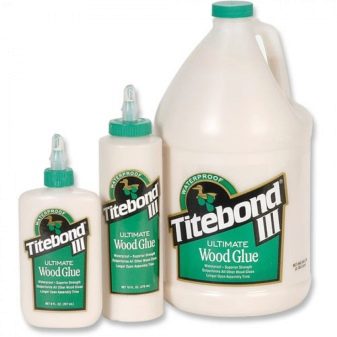
Among other things, Titebond 3 universal adhesive has the following properties:
- environmental friendliness;
- suitable for work at low temperatures.
Knowing the main characteristics of the composition allows you to get the best quality at no extra cost.
Scope of application
Glue II Premium used for joining wooden joints, gluing paper material, laminate, plywood, chipboard, veneer. The substance is used to repair outdoor wooden furniture. It can be used to glue cutting boards for cooking.
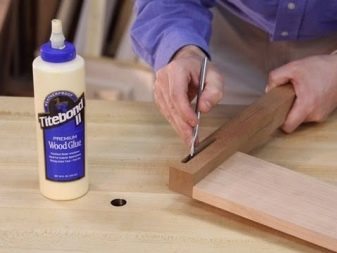
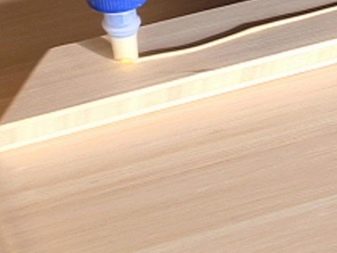
Original wood glue used for the construction and repair of wooden musical instruments.
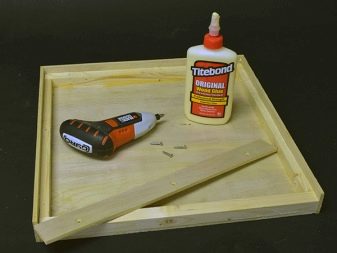
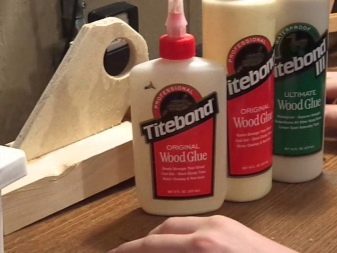
Titebond 3 used for joining veneer, plywood, wood, plastics, chipboard. The tool is used for both internal and external construction work. Due to the harmlessness of the composition, the substance can be used in the food industry. The glue is not used for joining surfaces that are under water.
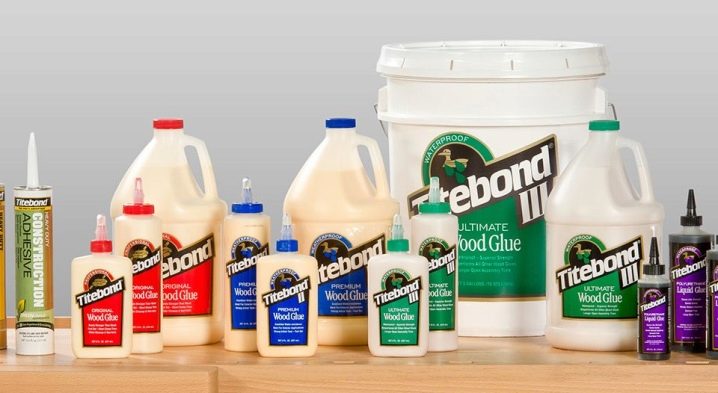
Usage Tips
It is recommended to use Titebond only at positive temperatures. Bonding surfaces must be dry, thoroughly cleaned of dirt, grease, and foreign particles.
Before applying the substance to the surface, it must be stirred. It should be remembered that the composition completely hardens after 10-20 minutes.Therefore, it must be prepared before starting work. For a tighter adhesion of the surface, you can hold it under pressure for some time.
The adhesive mixture is not recommended for joining surfaces covered with paint, as well as on damp surfaces.
All work with glue must be carried out in protective equipment. For this, special gloves and glasses are used. If the product gets on the skin or mucous membranes, it should be washed off with plenty of water, and if necessary, you should consult a specialist. The room must be well ventilated. The air humidity should not exceed the established standards.
The waterproof adhesive has a shelf life of 2 years from the date of opening the package. It should be stored at room temperature. It is not recommended to use expired glue.
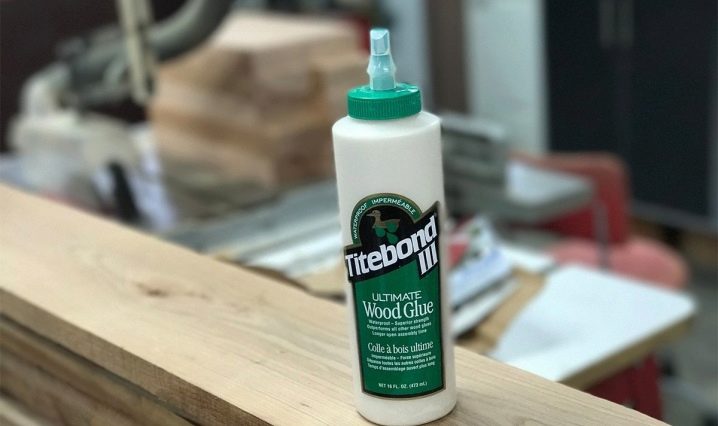
Reviews
Among the comments of those who used the adhesive in their home, there are both positive and negative opinions.
The positive aspects include ease of use, high adhesion density of surfaces, fast solidification. There are reviews that the strength of the glue is higher than the strength of the tree itself. It is noted that the substance, until it dries, can be easily removed from any surfaces.
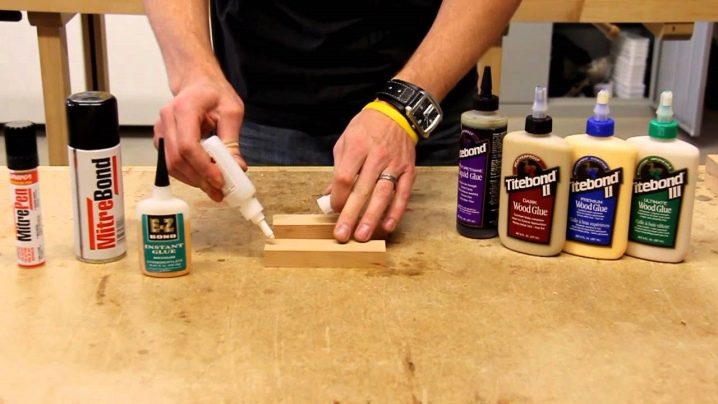
The disadvantages include the inability of the sticky substance to maintain its structure in direct sunlight. Rapid destruction of the glue line is noted. You can also find reviews that the glue dissolves in water, so it is not recommended for boat repair. Many people point to a fairly high cost.
When using the formulations for their intended purpose, in compliance with the instructions for use, there are no complaints about the product. Negative reviews are most often associated with a violation of the application technology or the use of low-quality formulations. It is important to note that any repair products should be purchased from stores. In this case, it is necessary to carefully study the instructions, and if you have any questions, consult a specialist.
You will find helpful tips for gluing wood in the following video.













The comment was sent successfully.